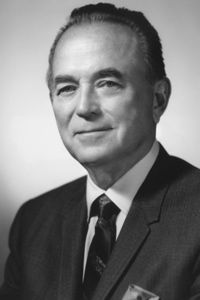McDonald's Real Estate
You've got to admit -- a lot of people think those fries are darn good. But to understand what made McDonald's Corp. so successful, you have to look at more than the food or Dick and Mac's Speedee System or even to Ray Kroc's dedication and savvy. Kroc himself attributed much of the company's success to a man named Harry Sonneborn [source: Love]. Sonneborn worked for McDonald's for a mere 10 years, but his real estate policies sealed the fate for the immensely successful company.
Let's back up a few years to when Kroc and the McDonald brothers were still working together. For some time after his hire, Kroc was struggling to make the business profitable. He wasn't bringing in enough revenue from his franchised restaurants. Part of his trouble was in getting the funds to pay for the land and the building for the restaurant. In order to maintain control over operations, Kroc needed to franchise one store at a time, rather than a whole slew of stores over a particular geographic zone, which is what other food chains did [source: Love]. Although other chains could attract big investors, the franchisees Kroc attracted didn't have the funds to pay for the land and the building.
Advertisement
That all changed in 1956 when he hired Sonneborn, who convinced him that the real money was in real estate. Sonneborn's idea was to have the McDonald's company lease a plot of land and the building for each restaurant. The company would then sublease to the franchisee who would run the restaurant. Sonneborn further developed the plan to eventually take out mortgages to own both the building and the land. [source: Love]. Kroc soon established the Franchise Realty Corp. to find willing landowners.
At first, McDonald's charged franchisees markups of 20 percent of lease costs, but it eventually increased this to 40 percent. Franchisees were responsible for insurance and taxes, ensuring a steady profit for the company as long as the restaurant stayed in business.
But that's not all: The rent due to McDonald's could be even more if the restaurant was doing well. The franchisee had to pay either the stipulated lease markup or 5 percent of the sales -- whichever was higher. Kroc and Sonneborn also requested up-front security deposits from the franchisees. Unbeknownst to the franchisee, this capital would fund the opening of more restaurants. Overall, this created a symbiotic relationship between the franchisee and the company -- McDonald's Corp. had a vested interest in the ongoing success of its individual restaurants [source: Love].
